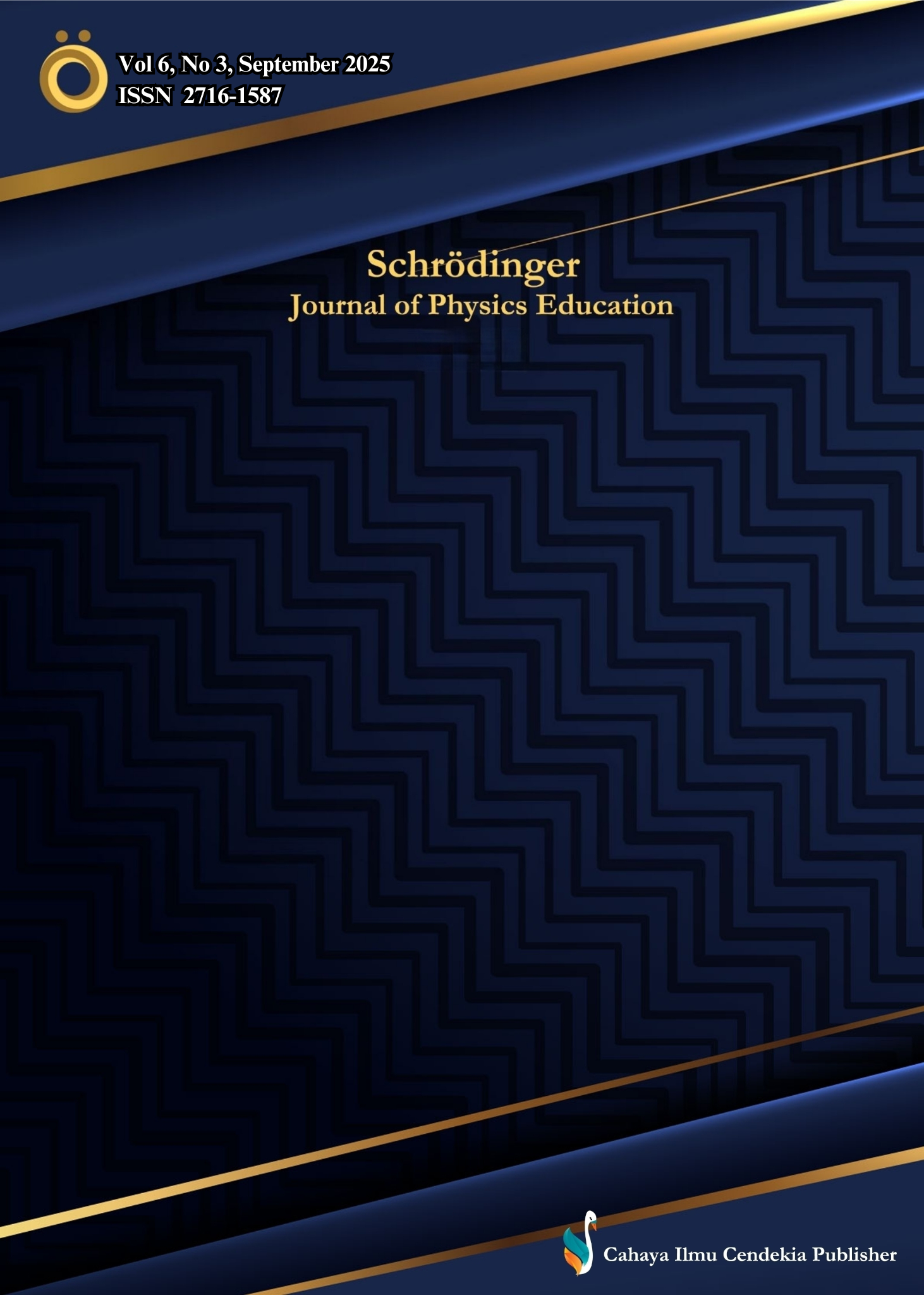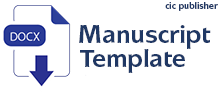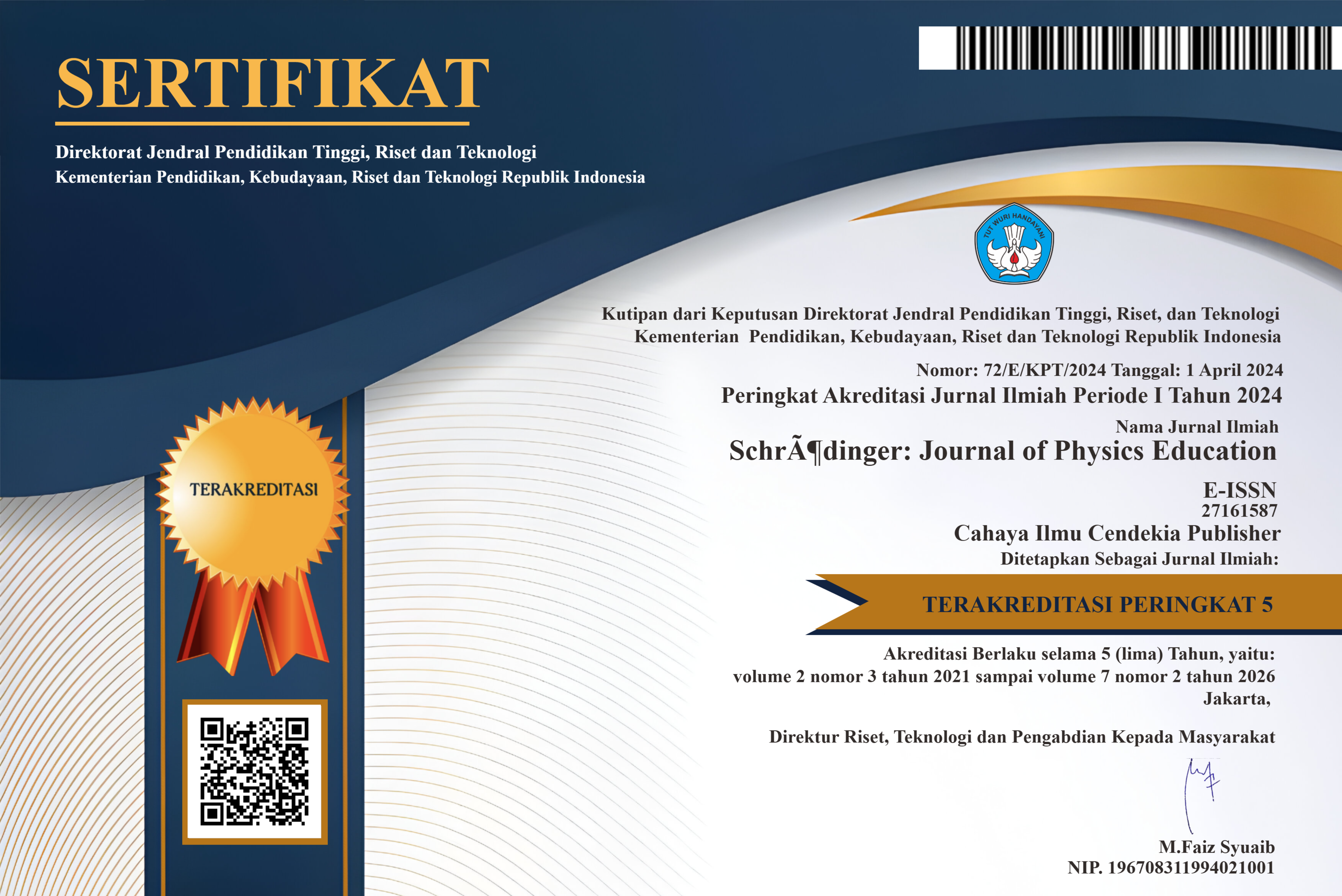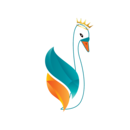From Tradition to Innovation: Exploring the Impact of Seurunee Kalee Based Ethnoscience in Guided Inquiry Physics Learning
Abstract
Purpose of the study: This study aims to examine the effect of the guided inquiry learning model integrated with an ethnoscience approach using the Seurunee Kalee context on students’ critical thinking skills in learning sound waves at Dewantara 1 State Senior High School.
Methodology: This study used a mixed-method approach with an explanatory sequential design and a quasi-experimental Non-Equivalent Control Group Design. Data were collected using tests, questionnaires, and interviews. Learning tools included worksheets and guidebooks. Data analysis employed SPSS version 25 for quantitative analysis and the Miles and Huberman model for qualitative review.
Main Findings: The guided inquiry learning model integrated with an ethnoscience approach using the Seurunee Kalee significantly improved students’ critical thinking skills on sound waves. The experimental group’s mean score increased from 31.81 to 78.63, while the control group rose from 29.09 to 68.18. The t-test result (Sig. = 0.039 < 0.05) confirmed a significant difference. Student responses reached 86.79%, categorized as very strong.
Novelty/Originality of this study: This study introduces the integration of a guided inquiry learning model with an ethnoscience approach using the Seurunee Kalee context in physics learning. The novelty lies in combining local cultural values with scientific inquiry to enhance students’ critical thinking skills, providing a new framework for contextualized and culturally relevant science education.
References
C. Kain, C. Koschmieder, M. Matischek-Jauk, and S. Bergner, “Mapping the landscape: a scoping review of 21st century skills literature in secondary education,” Teach. Teach. Educ., vol. 151, p. 104739, 2024, doi: 10.1016/j.tate.2024.104739.
N. Yuniarti et al., “Augmented reality‐based higher order thinking skills learning media: enhancing learning performance through self‐regulated learning, digital literacy, and critical thinking skills in vocational teacher education,” Eur. J. Educ., vol. 59, no. 4, Dec. 2024, doi: 10.1111/ejed.12725.
Muthmainnah, P. M. Ibna Seraj, and I. Oteir, “Playing with AI to investigate human-computer interaction technology and improving critical thinking skills to pursue 21stcentury age,” Educ. Res. Int., vol. 2022, 2022, doi: 10.1155/2022/6468995.
J. M. Voogt and N. N. Pareja Roblin, “Curriculum and 21st century skills,” R. J. Tierney, F. Rizvi, and K. B. T.-I. E. of E. (Fourth E. Ercikan, Eds., Oxford: Elsevier, 2023, pp. 49–55. doi: 10.1016/B978-0-12-818630-5.03007-4.
J. C. Mugabekazi, J. Mukanziza, P. Nizeyimana, and P. Manirahari, “Integrating collaborative learning strategies in the curriculum: enhancing critical thinking and communication skills in primary education,” Eur. J. Educ. Stud., vol. 12, no. 3, pp. 14–39, 2025, doi: 10.46827/ejes.v12i3.5848.
B. Thornhill-Miller et al., “Creativity, critical thinking, communication, and collaboration: Assessment, certification, and promotion of 21st century skills for the future of work and education,” J. Intell., vol. 11, no. 3, 2023, doi: 10.3390/jintelligence11030054.
D. L. Morris, “Rethinking science education practices: shifting from investigation-centric to comprehensive inquiry-based instruction,” Educ. Sci., vol. 15, no. 1, p. 73, Jan. 2025, doi: 10.3390/educsci15010073.
M. A. Manassero-Mas and Á. Vázquez-Alonso, “An empirical analysis of the relationship between nature of science and critical thinking through science definitions and thinking skills,” SN Soc. Sci., vol. 2, no. 12, pp. 1–27, 2022, doi: 10.1007/s43545-022-00546-x.
A. García-Carmona, “Scientific thinking and critical thinking in science education : two distinct but symbiotically related intellectual processes,” Sci. Educ., vol. 34, no. 1, pp. 227–245, 2025, doi: 10.1007/s11191-023-00460-5.
H. Herlinawati, M. Marwa, N. Ismail, Junaidi, L. O. Liza, and D. D. B. Situmorang, “The integration of 21st century skills in the curriculum of education.,” Heliyon, vol. 10, no. 15, p. e35148, Aug. 2024, doi: 10.1016/j.heliyon.2024.e35148.
W. L. Ge et al., “Critical thinking and clinical skills by problem-based learning educational methods : an umbrella systematic review,” BMC Med. Educ., 2025, doi: 10.1186/s12909-025-06951-z.
E. A. Angwaomaodoko, “Critical thinking: strategies for fostering a culture of inquiry in education,” Path Sci., vol. 10, no. 8, pp. 1001–1007, 2024, doi: 10.22178/pos.108-1.
A. Sutiani, M. Situmorang, and A. Silalahi, “Implementation of an inquiry learning model with science literacy to improve student critical thinking skills.,” Int. J. Instr., vol. 14, no. 2, pp. 117–138, 2021.
K. Wang, STEM Teachers’ Job Satisfaction: From the Lens of Job Demands-Resources. 2022. doi: 10.3102/1571467.
H. Suwono, N. L. Rofi’Ah, M. Saefi, and R. Fachrunnisa, “Interactive socio-scientific inquiry for promoting scientific literacy, enhancing biological knowledge, and developing critical thinking,” J. Biol. Educ., vol. 57, no. 5, pp. 944–959, Oct. 2023, doi: 10.1080/00219266.2021.2006270.
İ. Yılmaz, “Scientific and academic achievements of preservice science teachers in twelve given-desired problem types,” Acta Psychol. (Amst)., vol. 260, p. 105592, 2025, doi: 10.1016/j.actpsy.2025.105592.
C. F. J. Pols, P. J. J. M. Dekkers, and M. J. de Vries, “What do they know? Investigating students’ ability to analyse experimental data in secondary physics education,” Int. J. Sci. Educ., vol. 43, no. 2, pp. 274–297, 2021, doi: 10.1080/09500693.2020.1865588.
H. J. Banda and J. Nzabahimana, “Effect of integrating physics education technology simulations on students’ conceptual understanding in physics: a review of literature,” Phys. Rev. Phys. Educ. Res., vol. 17, no. 2, p. 23108, 2021, doi: 10.1103/PhysRevPhysEducRes.17.023108.
Y. Irhasyuarna et al., “Integrated science teaching materials with local wisdom insights to improve students’ critical thinking ability,” BIO-INOVED J. Biol. Pendidik., vol. 4, no. 3, p. 328, 2022, doi: 10.20527/bino.v4i3.14148.
U. Ormanci and S. Cepni, “The Effect of web-assisted guided inquiry approach on students’ systems thinking skills,” J. Sci. Educ. Technol., 2025, doi: 10.1007/s10956-025-10238-9.
Zulfan and Baihaqi, “Aceh serune kale and rapai ethnic musical instrument preservation method based on two-dimensional multimedia animation,” J. Phys. Conf. Ser., vol. 1232, no. 1, 2019, doi: 10.1088/1742-6596/1232/1/012027.
R. Zidny, S. Solfarina, R. S. S. Aisyah, and I. Eilks, “Exploring indigenous science to identify contents and contexts for science learning in order to promote education for sustainable development,” Educ. Sci., vol. 11, no. 3, 2021, doi: 10.3390/educsci11030114.
S. Prayogi, S. Ahzan, Indriaturrahmi, J. Rokhmat, and N. N. S. P. Verawati, “Dynamic blend of ethnoscience and inquiry in a digital learning platform (e-learning) for empowering future science educators’ critical thinking,” J. Educ. e-Learning Res., vol. 10, no. 4, pp. 819–828, 2023, doi: 10.20448/jeelr.v10i4.5233.
T. Pietarinen, T. Palonen, and M. Vauras, “Guidance in computer-supported collaborative inquiry learning: Capturing aspects of affect and teacher support in science classrooms,” Int. J. Comput. Collab. Learn., vol. 16, no. 2, pp. 261–287, 2021, doi: 10.1007/s11412-021-09347-5.
H. H. Wang, Z. R. Hong, H. C. She, T. J. Smith, J. Fielding, and H. shyang Lin, “The role of structured inquiry, open inquiry, and epistemological beliefs in developing secondary students’ scientific and mathematical literacies,” Int. J. STEM Educ., vol. 9, no. 1, 2022, doi: 10.1186/s40594-022-00329-z.
J. Maknun, “Implementation of guided inquiry learning model to improve understanding physics concepts and critical thinking skill of vocational high school students,” Int. Educ. Stud., vol. 13, no. 6, p. 117, 2020, doi: 10.5539/ies.v13n6p117.
N. Yuliana, N. Purwati, and H. Hanapi, “Improving student’s logical thinking abilities and learning outcomes through guided inquiry model,” Prism. Sains J. Pengkaj. Ilmu dan Pembelajaran Mat. dan IPA IKIP Mataram, vol. 10, no. 2, p. 345, 2022, doi: 10.33394/j-ps.v10i2.4822.
P. D. Ananda, Haryanto, and S. E. Atmojo, “The Impact of the discovery learning model on problem-solving ability and scientific attitude of elementary school teacher education students,” Int. J. Elem. Educ., vol. 6, no. 2, pp. 259–267, 2022, doi: 10.23887/ijee.v6i2.47684.
D. Hossan, Z. Dato’ Mansor, and N. S. Jaharuddin, “Research population and sampling in quantitative study,” Int. J. Bus. Technopreneursh., vol. 13, no. 3, pp. 209–222, 2023, doi: 10.58915/ijbt.v13i3.263.
F. Nyimbili and L. Nyimbili, “Types of purposive sampling techniques with their examples and application in qualitative research studies,” Br. J. Multidiscip. Adv. Stud., vol. 5, no. 1, pp. 90–99, 2024, doi: 10.37745/bjmas.2022.0419.
E. Asmororini, J. Kinda, and B. Şen, “Innovation learning geography with ArcGIS online: the impact to skills collaborative and achievement student school upper intermediate,” J. Educ. Technol. Learn. Creat., vol. 2, no. 1, pp. 1–12, 2024, doi: 10.37251/jetlc.v2i1.969.
C. S. Ayal, Y. S. Kusuma, J. Sabandar, and J. A. Dahlan, “The enhancement of mathematical reasoning ability of junior high school students by applying mind mapping strategy,” J. Educ. Pract., vol. 7, no. 25, pp. 50–58, 2016, [Online]. Available: www.iiste.org
I. Ilma, Riyadi, and B. Usodo, “Improving creative thinking skills and learning motivation through ethnomathematics-based interactive multimedia: An experimental study in primary school,” Multidiscip. Sci. J., vol. 6, no. 8, 2024, doi: 10.31893/multiscience.2024141.
N. F. Abdullah and N. Muda, “An overview of homogeneity of variance tests on various conditions based on type 1 error rate and power of a test,” J. Qual. Meas. Anal., vol. 18, no. 3, pp. 111–130, 2022, [Online]. Available: http://www.ukm.my/jqma
G. M. Tinungki et al., “Exploring the team-assisted individualization cooperative learning to enhance mathematical problem solving, communication and self-proficiency in teaching non-parametric statistics,” Cogent Educ., vol. 11, no. 1, pp. 1–27, 2024, doi: 10.1080/2331186X.2024.2381333.
S. T. Yimer and N. N. Feza, “Learners’ conceptual knowledge development and attitudinal change towards calculus using jigsaw co-operative learning strategy integrated with GeoGebra,” Int. Electron. J. Math. Educ., vol. 15, no. 1, pp. 1–26, 2019, doi: 10.29333/iejme/5936.
B. K. Illahi and Y. Yurnetti, “Effect of the guided inquiry learning model assisted by scientific worksheet toward critical thinking skills,” Phys. Learn. Educ., vol. 1, no. 1, pp. 29–35, Mar. 2023, doi: 10.24036/ple.v1i1.8.
A. Suciyati, I. G. P. Suryadarma, and P. Paidi, “Integration of ethnoscience in problem-based learning to improve contextuality and meaning of biology learning,” Biosfer, vol. 14, no. 2, pp. 201–215, Oct. 2021, doi: 10.21009/biosferjpb.18424.
N. Anggraini and J. N. Asante, “Implementation of ethnoscience-based electronic student worksheets on ecosystem material in elementary schools to improve students’ curiosity character,” Tekno - Pedagog. J. Teknol. Pendidik., vol. 14, no. 2, pp. 46–55, Oct. 2024, doi: 10.22437/teknopedagogi.v14i2.38467.
G. S. Aikenhead and M. Ogawa, “Indigenous knowledge and science revisited,” Cult. Stud. Sci. Educ., vol. 2, no. 3, pp. 539–620, Sep. 2007, doi: 10.1007/s11422-007-9067-8.
L. S. Vygotsky and M. Cole, Mind in Society: Development of Higher Psychological Processes. Harvard University Press, 1978. [Online]. Available: https://books.google.co.id/books?id=RxjjUefze_oC
N. N. S. Putu Verawati, A. Harjono, Wahyudi, and S. Gummah, “Inquiry-creative learning integrated with ethnoscience: efforts to encourage prospective science teachers’ critical thinking in Indonesia,” Int. J. Learn. Teach. Educ. Res., vol. 21, no. 9, pp. 232–248, 2022, doi: 10.26803/ijlter.21.9.13.
Y. F. Kasi, A. Samsudin, A. Widodo, and R. Riandi, “A thematic review on exploring ethnoscience in science education: a case in Indonesia,” Tadris J. Kegur. dan Ilmu Tarb., vol. 6, no. 2, pp. 229–241, Dec. 2021, doi: 10.24042/tadris.v6i2.9509.
Hikmawati, I. W. Suastra, K. Suma, A. A. I. A. R. Sudiatmika, and E. P. Astuti, “The effect of ethnoscience learning on the development of students’ cognitive and affective aspects in junior high school,” J. Penelit. Pendidik. IPA, vol. 10, no. 5, pp. 2797–2805, 2024, doi: 10.29303/jppipa.v10i5.7658.
OECD, “OECD Learning Compass 2030: A series of concept notes,” 2019. [Online]. Available: https://www.oecd.org/education/2030-project/learning-compass-2030/
R. M. Silalahi, “Understanding Vygotsky’S zone of proximal development for learning,” Polyglot J. Ilm., vol. 15, no. 2, p. 169, 2019, doi: 10.19166/pji.v15i2.1544.
D. A. Kolb, Experiential Learning: Experience as The Source of Learning and Development, no. 1984. 1984. doi: 10.1016/B978-0-7506-7223-8.50017-4.
H. Hikmawati, I. W. Suastra, and N. M. Pujani, “Ethnoscience-based science learning model to develop critical thinking ability and local cultural concern for junior high school students in Lombok,” J. Penelit. Pendidik. IPA, vol. 7, no. 1, pp. 60–66, Dec. 2020, doi: 10.29303/jppipa.v7i1.530.
W. Oviana, M. Jannah, S. Nurdin, and P. Rahmi, “The implementation of an ethno-inquiry-based science module to enhance the scientific process skills of prospective primary school teachers,” Tadris J. Kegur. dan Ilmu Tarb., vol. 10, no. 1, pp. 275–286, Jun. 2025, doi: 10.24042/tadris.v10i1.26719.
G. Ladson-Billings, “Toward a theory of culturally relevant pedagogy,” Am. Educ. Res. J., vol. 32, no. 3, p. 465, 1995, doi: 10.2307/1163320.
S. Sarwi, A. Yusnitasari, and W. Isnaeni, “Concept mastery of ethnoscience-based integrated science and elementary students’ life skills using guided inquiry,” in Proceedings of the International Conference on Science and Education and Technology (ISET 2019), Paris, France: Atlantis Press, 2020. doi: 10.2991/assehr.k.200620.103.
Copyright (c) 2025 Elvida Elvida, Mei Chi Lee

This work is licensed under a Creative Commons Attribution 4.0 International License.
Authors who publish with this journal agree to the following terms:
- Authors retain copyright and acknowledge that the Schrödinger: Journal of Physics Education is the first publisher licensed under a Creative Commons Attribution 4.0 International License.
- Authors are able to enter into separate, additional contractual arrangements for the non-exclusive distribution of the journal's published version of the work (e.g., post it to an institutional repository or publish it in a book), with an acknowledgment of its initial publication in this journal.
- Authors are permitted and encouraged to post their work online (e.g., in institutional repositories or on their website) prior to and during the submission process, as it can lead to productive exchanges and earlier and greater citation of published work.







.png)
.png)








.png)
.png)
.png)







